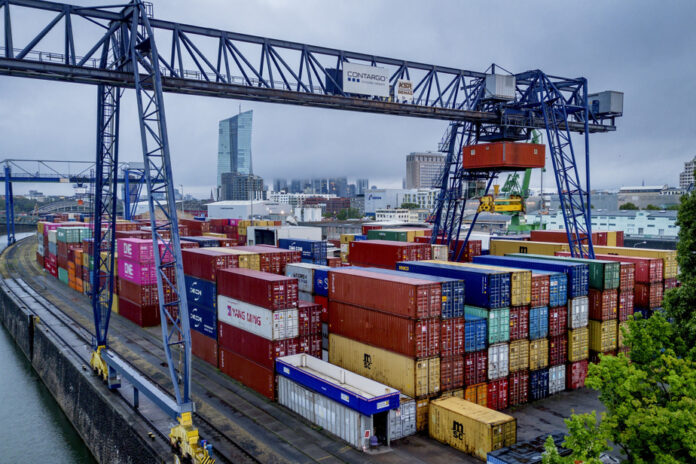The main world economies have all recovered from the pandemic, but they have contracted another virus, that of inflation, which threatens to send them back to the mat.
Now that the official figures for the first two quarters of the year have been released, it can be seen that the news is not all bad on the economic front.
In the G7 countries, economic growth in the second quarter is 4% higher than its level in the last quarter of 2019, before the pandemic. The recovery of lost ground has been more or less rapid depending on the country and, in some cases, it is not yet complete.
This is particularly the situation in Great Britain, which has been hit simultaneously by the pandemic and Brexit. In mid-2023, Britain’s GDP remained slightly lower than it was at the end of 2019, according to the most recent official statistics (a revision of which has, however, been announced).
Germany has only just made up the ground lost since 2019. Europe’s main economy has suffered more than its neighbors from the war in Ukraine and its dependence on Russian gas. The country has been in recession since the end of 2022 and is expected to end 2023 in the negative.
Europe as a whole is doing better. Spain, for example, was the European economy most affected by the pandemic with an 11.3% decline in GDP in 2020. The country is now posting a growth rate 0.4% higher than its end of 2019 level.
The recovery is uneven and has not happened at the same speed from one country to another. In the United States, the rebound was very strong and very fast. By the second quarter of 2021, US GDP had returned to its pre-pandemic level, said Desjardins economist Francis Généreux.
The difference is explained by the duration of the confinements, which are more or less severe depending on the country, and by the recovery plans of the governments, which have been more or less generous. As a proportion of its GDP, Canada has been the most generous of the G7 countries.
The global economy has therefore just ended a pandemic episode that spanned three years and which still has surprises in store for us.
In Japan, where anemic economic growth is the norm and the population shrinks year after year, the second quarter ended with GDP up 6%. This extraordinary performance, which is explained by an increase in car exports and an increase in the number of tourists, is unexpected in the current context.
China had recovered very quickly from the pandemic before being struck down a second time by the virus to the point of having to practically shut down its economy. The country is currently grappling with serious problems that no longer have anything to do with COVID-19, but which are just as serious.
The real estate sector is collapsing, exports are down and the unemployment rate is skyrocketing. Unlike elsewhere, deflation, or a general decline in prices, threatens to wipe out economic growth in the world’s second-largest economy this year.
Almost everywhere else, it is inflation and rising interest rates that risk tipping economies into recession. In Canada, where GDP entered negative territory in the second quarter of 2023, the recession may have already begun.
After the pandemic, it is therefore another virus which attacks industrialized countries. It has not yet had the terrible impact predicted, which could give economies time to adjust and limit the damage.
It’s an optimistic scenario that’s starting to take hold. In any case, the International Monetary Fund has just raised the growth forecasts for the global economy in 2023 made last April. For industrialized countries, the anticipated growth rate increased from 1.2% to 1.5%.
The patient is weak, but he survives.















